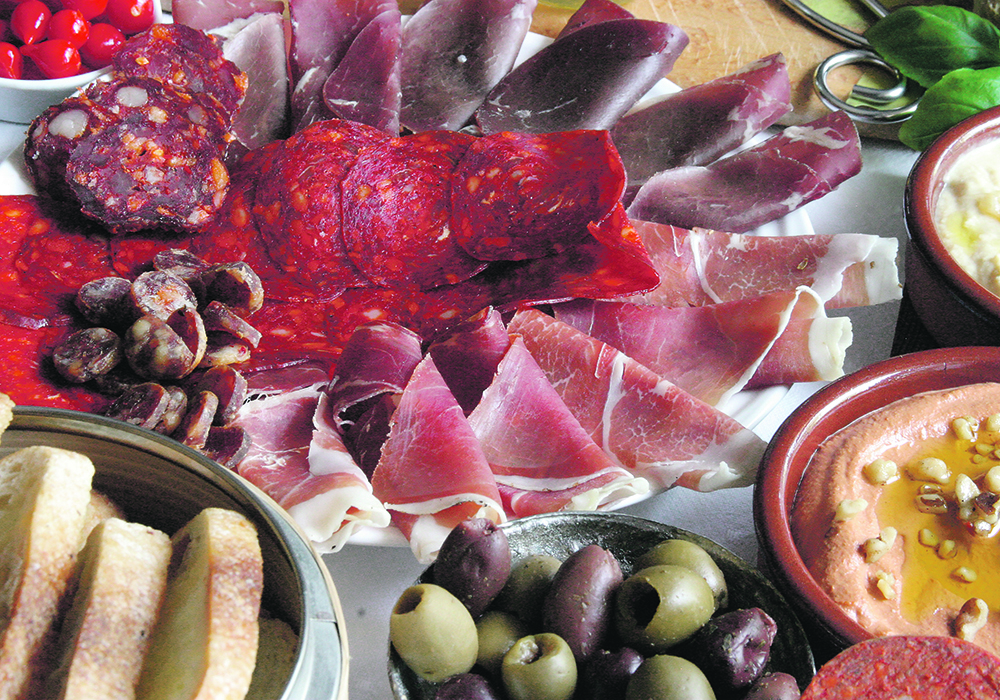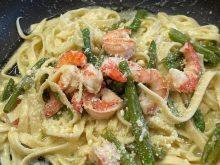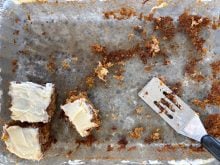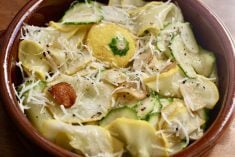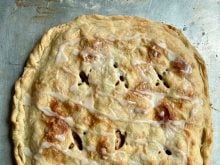Casual meals are the best meals over the busy summer months. They can be as simple or complicated as you make them. They are also a good way to use bits and pieces of ingredients in the refrigerator and pantry.
Plan to have lots of tongs, wooden picks and small forks available to keep guests from touching the food with their hands.
Planning a grazing meal can be a lot of fun. There are many options, ranging from tapas to charcuterie to cheese boards and more. Choose a theme, if you wish, such as Mediterranean mezes, Italian antipasti or Spanish tapas.
Read Also

Know what costs are involved in keeping crops in the bin
When you’re looking at full bins and rising calf prices, the human reflex is to hold on and hope for more. That’s not a plan. It’s a bet. Storage has a price tag.
Use bread boards, chopping boards, platters or sheet pans for large arrangements. Ramekins, baking moulds and tins, saucers and any other small dish or bowl works well for small items. Bowls add dimension and height to the board. Don’t worry about everything matching. The food will pull it all together.
Vegetable platters are nicest when they showcase the rainbow of options. The brighter and more colourful the better. People eat with their eyes first. Dark green vegetables like green beans, broccoli and fiddleheads are best if blanched for two minutes and chilled. There is more flavour in the blanched vegetable and fiddleheads, when eaten raw, may create digestive problems.
Baby potatoes and corn coblets should also be boiled until barely tender and chilled. Cutting vegetables into a variety of shapes makes the platter visually appealing. Add your favourite dip or salad dressing. If you are using a store-bought dip, pour it into a small bowl or half a bell pepper to give it that homemade look.
A cheese board should offer a soft, creamy and unripened cheese, a hard aged cheese like a cheddar, manchego or gruyere and a blue cheese. Slicing the cheese ahead of time and arranging it on the platter is easier for self-serve. Crackers, bread, breadsticks or pita can be laid out in small baskets or bowls.
Cheese pairs well with fruits, berries, jams and honey. Also, add something salty like roasted nuts and seeds.
When you are planning a cheese board, these are the suggested amounts needed of each item:
- cheese — two to three ounces per person
- meat — four to six slices per person
- fruit — two to four tablespoons per person
- nuts — two to three tablespoons per person
- olives and pickles — three to four per person
- honey/jam – one tablespoon per person
- crackers/bread — seven to 10 slices per person
Other types of individual boards for one or two people can easily be prepared and are just like putting food on a plate. One idea is a single serving of chicken liver paté with baguette and crackers. The boards are visually appealing and festive. Buy small cedar planks as you would for planked salmon. They can be washed, dried in the sunshine and reused.
Or create a sharing board with hummus or muhammara. Spread the dip over the board and garnish with crumbled feta, crispy chick peas, parsley, tomato salad and a drizzle of olive oil.
Muhammara (roasted red pepper and walnut dip)
Scoop up this richly flavoured dip with raw vegetables, like carrot sticks and endive, or with warm pita and pita chips. Use roasted red peppers from a jar if you don’t have time to roast your own peppers.
- 2 red bell peppers
- 4 tbsp. extra virgin olive oil, divided 60 mL
- 1/4 lb. shelled toastedwalnuts 100 g
- 1 garlic clove roughly chopped
- 2 1/2 tbsp. tomato paste 37 mL
- 3/4 c. bread crumbs 175 mL
- 2 tbsp. pomegranatemolasses 30 mL
- 1 tsp. Aleppo pepper 5 mL
- 1 tsp. sumac 5 mL
- 1/2 tsp. salt 2 mL
- 1/2 tsp. cayenne pepper, optional 2 mL
Char the whole peppers on a sheet pan under the broiler in the oven or over hot coals on the grill. Turn when it has blackened and repeat until the entire peppers are blackened.
Remove from the heat and place the peppers in a covered bowl or a closed bag. This traps the steam from the peppers, making them easy to peel. When cool enough to handle, peel and remove seeds and stem. Slice peppers into small strips.
In the bowl of a food processor, combine the red pepper strips with three tablespoons (45 mL) extra virgin olive oil, toasted walnuts, tomato paste, bread crumbs, pomegranate molasses, Aleppo pepper, sumac, salt and cayenne. Blend into a smooth paste. If it is too thick, add a little water.
Transfer to a serving bowl. The dip can be stored, covered, in the refrigerator for two or three days, but be sure to bring to room temperature before serving.
When ready to serve, top the dip with a drizzle of extra virgin olive oil and garnish with a few more chopped walnuts and fresh parsley. Serve with pita bread or pita chips.
Olive oil crackers
Homemade crackers are a great addition to any table. Roll these as thinly as possible because they puff up in the oven. I find the easiest way to roll them is to weigh into 20 gram balls and then roll into tongues. Makes two to three dozen large crackers.
- 1 1/2 c. all-purpose flour, plus extra for dusting 375 mL
- 1/3 c. whole wheat flour 75 mL
- 1 tsp. baking powder 5 mL
- 1/2 c. water 125 mL
- 1 tbsp. + 2 tsp. extra virgin olive oil, plus extra for brushing 25 mL
- 1/2 tsp. fine sea salt 2 mL
- 1 tsp. paprika 5 mL
- 1/2 tsp. cayenne pepper, optional 2 mL
- 1/4 tsp. black pepper 1 mL
- Maldon flaky salt, poppy seeds, sesame seeds, minced garlic for topping
Combine all the ingredients except the sea salt in a large bowl. Bring it together, and then turn onto a work surface and knead briefly until smooth. Wrap in cling film or place in a bowl with a lid and leave it to rest for an hour in the fridge.
Line baking sheet with parchment paper.
Preheat the oven to 425 F (220 C). On a well-floured surface, use a rolling pin to roll as thin as possible. You will need to stop at intervals to allow the dough to relax for a few minutes, allowing it to continue to be rolled very thinly.
Use flour to ensure the dough doesn’t stick to the surface. Brush the top generously with olive oil, then sprinkle on the sea salt, or topping of your choice.
Place the crackers on a parchment lined sheet pan. Bake for six to seven minutes, until crisp and golden brown. Store in an airtight container. This also freezes well.
Sarah Galvin is a home economist, teacher and avid supporter of local food producers. She has been a market vendor, grew up on a farm in southeastern Saskatchewan and is a member of TEAM Resources.


